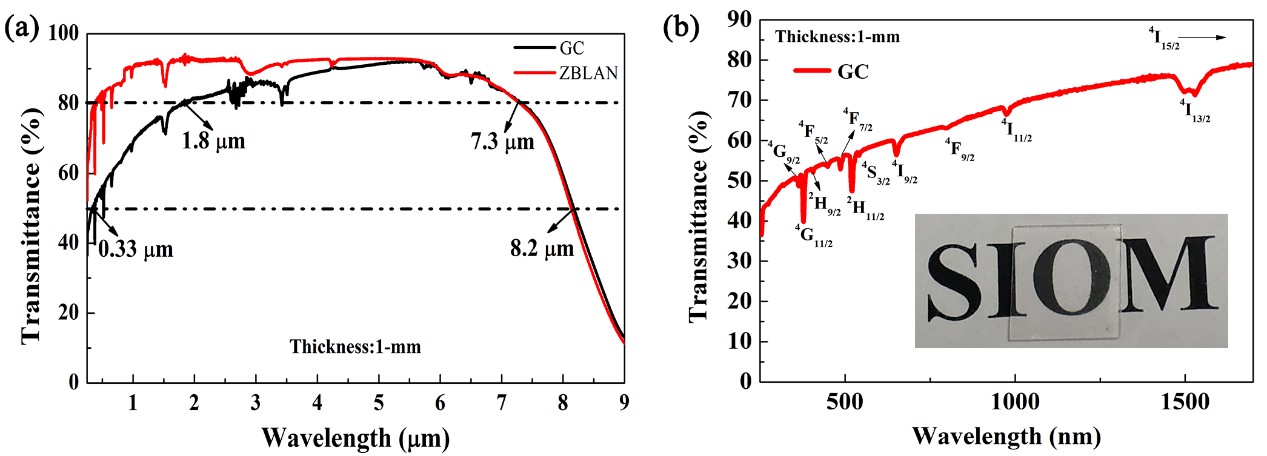Low-phonon energy infrared optical and photonic materials are widely used in various fields, such as defense, scientific research, medicine and industry. Among these materials, glass ceramics are considered as the promising candidates for infrared applications due to their unique optical, chemical, and physical properties. However, existing glass ceramics possess high phonon energy due to the presence of oxide components, which seriously hinders its application in infrared fields. Thus, a central theme in glass ceramics is the design and fabrication of ultra-low phonon energy perfluorinate glass ceramics for the establishment of advanced infrared optical systems.
Recently, a research team led by Professor ZHANG Long from Shanghai Institute of Optics and Fine Mechanics of the Chinese Academy of Sciences has developed a new ZnZrF6-Ba6Zn7F26 transparent perfluorinate glass ceramic by phase-separation engineering in fluorozirconate glass. Their study was published in Journal of the European Ceramic Society.
They designed the glass with the chemical composition (mol%) of 52ZrF4-20BaF2-4LaF3-3AlF3-15NaF-5ZnF2-1ErF3 and NH4HF2 was used as fluoride agent. Raw materials were melted at 850 °C for 10 min and the melt was poured into mold. The melt was appropriately pressed by stainless steel, after which glass ceramic samples were obtained. In this process, the control of cooling rate is the key.
They discovered that the ZnZrF6-Ba6Zn7F26 glass ceramic sample had successfully achieved high transparency from ultraviolet (0.33 μm) to mid-infrared (8.2 μm), which was similar to ZBLAN glass and much longer than oxide- and oxyfluoride- glass ceramics. Especially, ZnZrF6-Ba6Zn7F26 glass ceramic also showed a stronger 1.5μm and 2.7 μm infrared emission than that of ZBLAN glass.
Accordingly, the designed perfluorinate glass ceramic sample is promising for establishing advanced infrared systems. Most significantly, this work provides effective approach for obtaining ultra-low phonon energy glass ceramics for future applications in infrared windows, mid-infrared lasers, infrared detection and imaging.

The in-line transmittance spectrum in the polished glass ceramic and ZBLAN glass. (Image by SIOM)
Article website:
https://doi.org/10.1016/j.jeurceramsoc.2020.02.051
Contact:
Mr. CAO Yong
General Administrative Office
Shanghai Institute of Optics and Fine Mechanics, CAS
Email: caoyong@siom.ac.cn